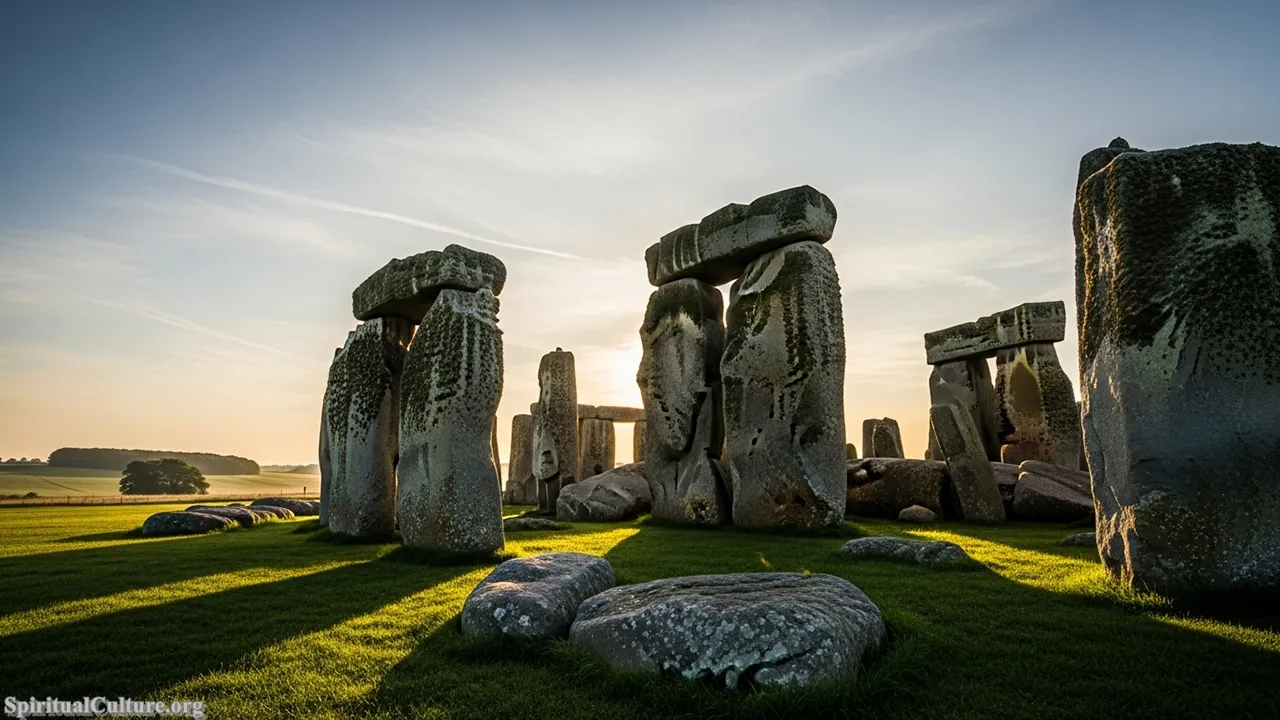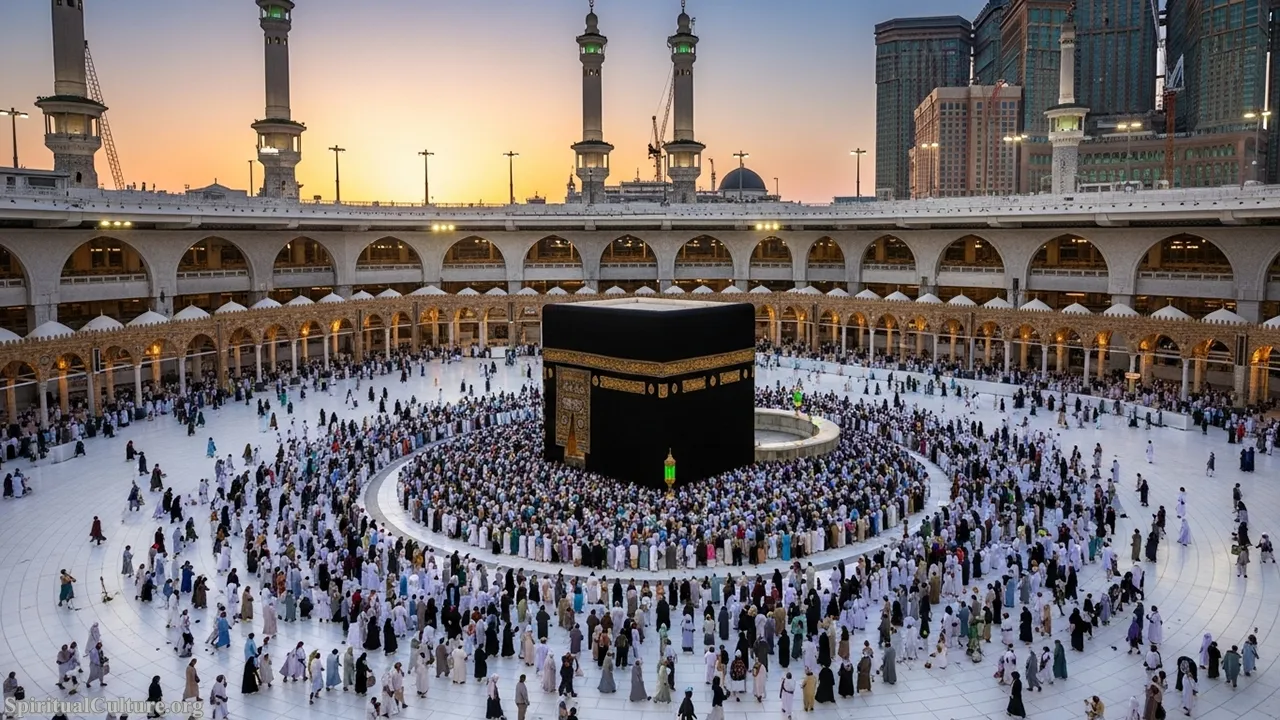Music has always been more than melody and rhythm — it is spirit made audible, a universal language through which humanity reaches for the divine. Across continents and creeds, music serves as a bridge between the visible and the invisible, a vessel for prayer, celebration, mourning, and mystery. From ancient chants echoing in stone temples to gospel choirs filling cathedrals with praise, music breathes life into faith — not just in what is sung, but in what is felt.
As Spiritual Culture, we invite you into this exploration: how does music express faith in cultures near and far? What truths lie in the harmonies of the sacred? And why does the human heart so often turn to song when it seeks something eternal?
This article journeys through diverse spiritual landscapes to discover how music shapes, sustains, and sanctifies faith across the world — and what it reveals about our deepest longing to know the Divine.
Music as a Universal Language of the Sacred
Music speaks when words fall short
All spiritual traditions at some point confront the same mystery: how to speak of the Infinite. Often, words fail. But music — wordless or lyrical — offers a way of reaching the sacred not by definition, but by resonance.
From the soaring echoes of Gregorian chant to the meditative drone of Tibetan bowls, music becomes an offering of the soul. As the Sufi poet Rumi wrote:
“When the soul lies down in that grass, the world is too full to talk about. Ideas, language… even the phrase each other — doesn’t make any sense.”
It is in this space beyond speech that music thrives — making space for divine encounter.
Sound as sacred vibration
Many Eastern traditions view sound not as entertainment, but as essence. In Hinduism, the universe is said to have originated from Om, a primordial sound that contains all creation. Chanting mantras like Om Namah Shivaya is not just prayer — it is participation in the vibrational harmony of the cosmos.
Similarly, in indigenous shamanic cultures, drumming mimics the heartbeat of the earth, aligning human consciousness with the spiritual world.
Christianity and the Sacred Song
The Psalms: Singing the soul’s full range
The Hebrew Psalms — embraced in both Jewish and Christian traditions — were originally songs. These sacred poems are not mere recitations; they are expressions of lament, praise, longing, and trust.
Psalm 98 invites:
“Sing to the Lord a new song, for he has done marvelous things.”
Early Christians adopted this musical tradition, singing hymns and spiritual songs (Colossians 3:16) to encourage one another and glorify God. To this day, churches across the globe echo with these ancient cadences.
Gospel and the cry for liberation
In the African-American church, gospel music was born from the wounds of slavery and the hope of deliverance. Rooted in spirituals like Swing Low, Sweet Chariot, gospel became a declaration of faith and freedom.
The rhythms, the claps, the soaring vocal runs — they are not performance. They are prayer. They are resistance. They are faith that dances, even through sorrow.
Islam and the Beauty of Recitation
The Qur’an as musical revelation
Though Islamic tradition avoids music in formal worship, it elevates the art of tajwid — the melodic recitation of the Qur’an. To hear a skilled reciter chant the sacred text is to encounter beauty imbued with reverence.
The sound of the Qur’an is not meant to entertain, but to move the heart. As one Hadith records, the Prophet Muhammad said:
“He who does not recite the Qur’an in a pleasant tone is not of us.”
This “pleasant tone” is not mere performance — it is an act of devotion, a soul shaping its voice in surrender to divine will.
Sufi music and divine longing
Among Sufi mystics, music plays a more direct role in spiritual practice. The sama — gatherings of music, poetry, and whirling dance — are designed to dissolve the self and awaken love for God.
As Rumi wrote:
“We rarely hear the inward music, but we’re all dancing to it nevertheless.”
Through the reed flute, the drum, the human voice, the Sufi seeks not information, but union.
Judaism and the Echoes of Ancestral Song
Cantillation and covenant
In the Jewish tradition, the Torah is not merely read — it is sung. The ancient system of tropes guides the musical chanting of scripture, infusing even the law with lyrical reverence.
This musicality carries through to prayers like the Shema and the Amidah, often intoned with melodies that vary across Sephardic, Ashkenazi, and Mizrahi communities — yet all drawing the heart toward covenantal intimacy.
Klezmer and sacred celebration
While not inherently religious, klezmer music — born of Eastern European Jewish communities — often infused weddings and holy days with joy. Its melodies carry both grief and gaiety, speaking to a faith that holds sorrow and celebration in the same breath.
Hindu Devotion and the Power of Bhakti Music
Bhajans and kirtans: Singing to the Divine
In Hinduism, bhakti — devotional love — often takes the form of music. Bhajans (devotional songs) and kirtans (call-and-response chants) are sung not only in temples but in homes, on the street, at dawn and dusk.
These songs name the Divine — Krishna, Rama, Shiva, Devi — over and over, sometimes for hours. The repetition is not monotony, but immersion. It is the soul bathing in divine presence.
Music as offering
In the Bhagavad Gita, Krishna tells Arjuna:
“Whatever you do, whatever you eat, whatever you offer… do it as an offering to Me.” (BG 9:27)
Music, then, becomes prasad — a gift offered to God, and sanctified in return.
Buddhism and the Sound of Stillness
Chanting as mindfulness
In many Buddhist traditions, music is quiet, contemplative — not meant to stir emotion, but to center awareness. Monks chant sutras in Pali, Sanskrit, or Chinese with steady cadence, focusing the mind.
The chant is both anchor and prayer — a rhythm that draws the practitioner into stillness, beyond thought, beyond self.
The bell, the bowl, the breath
Beyond voice, instruments like the singing bowl, mokugyo (wooden fish), or monastery bell are used to mark time and presence. A single resonating tone can become the threshold between the ordinary and the sacred.
Indigenous Traditions and the Song of the Land
Song as oral scripture
For many Indigenous peoples, music is memory. Stories, laws, cosmologies — all are preserved in song. Whether among the First Nations of Canada or the Aboriginal peoples of Australia, sacred songs encode the wisdom of the land and ancestors.
To sing is to remember. To drum is to reawaken the world.
Ceremonial rhythms and healing
In rituals of healing, hunting, or harvest, music becomes the medium through which the community aligns with the rhythms of nature and the spirits. The drumbeat is not an accessory — it is a heartbeat. The chant is not a performance — it is prayer made flesh.
Music as a Mirror of Spiritual Identity
Cultural flavor, spiritual essence
While the musical expressions of faith vary widely — from the silence between Zen bells to the exuberant praise of Pentecostal worship — their purpose converges: to connect, to express, to embody.
Music reveals the spiritual DNA of a culture. It teaches us what a people believe about the divine, the human, and the journey between them.
The sacred in the secular
Even beyond explicitly religious settings, sacred themes emerge in popular music. A gospel riff in a hip-hop track. A lament that becomes a psalm. A love song that aches like a prayer. These fragments remind us: the line between sacred and secular is often sung, not drawn.
Reflect and Reimagine
In every culture, faith sings. Sometimes in unison, sometimes in many keys — but always with the same longing: to touch the eternal. Music gives voice to our deepest reverence, our hidden questions, and our soaring hopes.
As Spiritual Culture, we invite you to listen — not just with your ears, but with your heart. What music moves you toward mystery? What song becomes your prayer?
Whether it’s a chant, a hymn, a drumbeat, or a whisper — let your spirit sing.
If this reflection resonated with you, share a sacred song from your own tradition or one that has touched your soul. Let’s listen to each other — and to the sacred music playing beneath all things.




